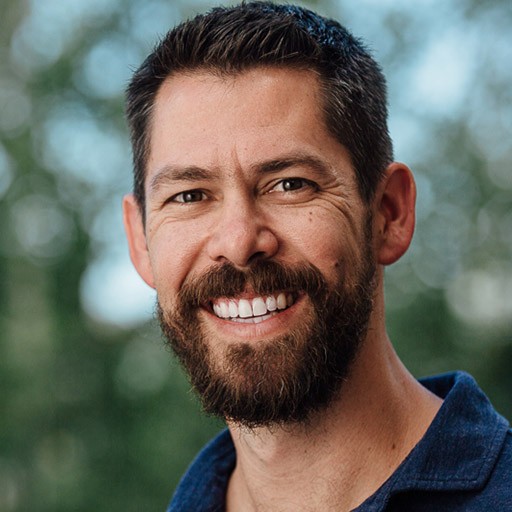Episode Transcript
You probably have too many meetings. Some should have been an email, others drag on without a clear purpose, with poor facilitation, without any clarity about who should be there and why. We created our DAVID approach to meeting facilitation to make all of those better, and we'll link to that in the show notes.
But even when meetings are necessary, and even when the right people are in the room, we often run into a subtle problem that researchers call unequal share of voice. Think about your team meetings. Who talks the most? Who barely says a word? You probably immediately pictured somebody for each of those questions.
The data show clearly that on teams with a more equal share of voice performance improves. More perspectives are considered, more creative options are generated, and team members are more committed to the outcome since they had a hand in shaping them.
But achieving a balanced share of voice is tricky due to several factors, including perceptions of power related to hierarchy, role, seniority, expertise, gender, and a sense of safety, along with some practical challenges like the meeting format or personality and communication styles.
We help coach leaders with dominant voices to be more self-aware, which helps, but it's slow, it's effortful, and it rarely changes things overnight. And you may not have permission to coach the more enthusiastic speakers on your team. So in today's episode, we'll share how a simple facilitation approach, using small breakout groups, can address those challenges in your team meetings.
Breakouts help balance the share of voice, spark better ideas, and boost engagement. We'll walk through a real example of how breakouts got a small team unstuck, share what the research says about why they work, and outline the simple rules we use to make them effective.
But first, a quick reminder that this episode is brought to you by us at the Humanizing Work Company, where we help organizations improve their leadership, product management, and collaboration.
Visit humanizing work.com to learn more about our workshops, coaching and online courses, or to bring us in to support your teams in getting better outcomes, including how to reduce the number of meetings on your calendar and how to make the ones you do hold much more effective.
And if you get value from this show and you wanna support it, the best thing you can do if you're watching on YouTube is subscribe, like the episode, and click the bell icon to get notified of new episodes and drop us a comment with your thoughts.
If you're listening on the podcast, a five star review makes a huge difference in whether other people who'd benefit from the show find it or not.
If you've taken a course from us, you've already experienced breakout groups. We use them to give participants a chance to explore a concept, to practice using it to learn from each other in a small group setting.
Working with just a few others makes it easier for everyone to chime in and contribute. Breakouts are a staple in large group facilitation. You'll find them used in well-known approaches like World Café and our favorite Liberating Structure, 1, 2, 4, All. We'll drop links to those methods on the episode page if you wanna learn more about them.
But your team, if it's well formed, is already pretty small, especially compared to those larger groups. Do you still need breakouts? Well, the research and our own experience show a clear answer. For example, Sandy Pentland, creator and director of MIT's Human Dynamics Laboratory, found in his research that even in small teams of five to seven people, using breakout groups of two or three people significantly increased participation and psychological safety. People were more likely to share openly and contribute novel ideas in groups of two or three, avoiding the dominance and inhibition effects that emerge in discussions on even relatively small teams.
And our own experience aligns well with the research. I was recently working with an executive team with six members, so a pretty small team. We were spending the day developing a big strategy shift that they hoped would carry them through the next three or so years.
In the early hours of that meeting, two competing views had started to dominate the discussion. So I took a break and planned the next hour as a breakout. Now, there were two champions of the two different viewpoints on what the company should do, which I labeled on the board options A and B, and then I decided to split the team of six people into three breakout groups.
Breakout one would focus on working through option A, breakout two on option B, and breakout three would come up with any strategic approach that was different from both options A and B in some way, and work through that one. This third breakout group was an example of a wild card where we try to bring divergent thinking into a meeting and check out the show notes for a link to more on that topic.
After the break, I invited team members to pick one of the three breakouts to join for the next hour. Before launching the breakout, I invited everyone to chime in with a crazy idea or two that breakout three could explore, and then I gave all three breakout groups a clear framework to use to present their results at the end of the hour. It was a combination of our strategy steps, canvas and a proprietary strategic forces canvas, and I set them loose in different corners of the conference room.
Almost immediately, I could feel the shift from stuck and frustrated to creative and energized; from argumentative to collaborative. In groups of two, there was much more back and forth, much less advocacy and convincing, and much more inquiry and exploration.
At the end of the breakout, the option B pair had talked themselves out of it being a good path to pursue, realizing that it would be counter to some of their company values, and that while it was likely to help in the short term, it probably would limit their options in the long term. Breakout three presented a really interesting alternative path, which didn't end up getting picked, but one part of that path was excitedly incorporated into the option A proposal.
No vote was needed. Everyone could see option A was the best path, especially with that injection of the ideas from option C.
So why do breakouts work even for small teams? Well, first, they reduce two communication challenges that psychologists refer to as production blocking and evaluation apprehension. They like big words.
Production blocking occurs in group discussions even with just five to seven people because only one person can speak at a time and while somebody's speaking, others are often mentally buffering what they wanna say or just checking out. Whoever's talking is blocking others from contributing for some amount of time.
Evaluation apprehension happens when people hold back out of fear of judgment. In a large group, people are just more cautious. In a pair or a trio, that fear tends to drop away.
Second, breakouts let you work in parallel building more insight in less time. This gives the team more intellectual surface area to build on.
For example, in that executive strategy session. All three directions were explored in parallel. So convergence wasn't artificially narrowed by time pressure or group dynamics.
Third, breakouts shift participation patterns and power dynamics. In small breakouts, everyone contributes. It's hard not to. That gently pressures quieter team members to engage and gives them a safer environment to do so.
One study out of MIT's human dynamics lab mentioned earlier showed that teams with more equal turn taking performed better across every measure they tracked- problem solving, innovation and morale.
And fourth, breakouts make more room for different communication styles. Some people want to think first before speaking. Others speak their way to towards clarity. And breakouts give space for both. In a full group setting, speakers can dominate and thinkers can go unheard In smaller groups, thinkers have time to develop and voice their perspective.
To make breakouts work at the team scale, we follow a few basic rules.
First, use pairs or trios. We've found that anything larger than that leads to the dominant patterns creeping back in. Use pairs when you want depth, safety and reflection, like surfacing risks or exploring values. Use trios when you want a bit more diversity of thought or resilience, like when brainstorming or comparing multiple perspectives.
Second, give a clear time box and a clear task or prompt. Make success for the breakout session crystal clear before they start. We'll link to our activity instructions checklist that you can use to give better instructions so groups don't go off the rails.
And finally ask groups to prepare some artifact to bring back. This raises engagement and leads to more thoughtful synthesis. It also allows different strengths to shine. Some may be talkers and idea generators. Others may be visualizers and idea synthesizers. All can shine when breakouts need to create something to share.
The next thing to consider is where in a meeting to use breakouts.
Most good meetings follow three stages that we borrow from the Gamestorming technique. Divergence, where we're generating lots of options, exploration, where we're exploring the options we created in the first stage, and convergence where we narrow the options and pick a course of action. Breakouts are most useful in the divergent and exploration stages, but they can be used to help make the convergence stage more effective.
Let's look at each stage briefly
in the divergent stage, use breakouts to generate breadth. You can use prompts like "come up with as many different approaches as you can in eight minutes." This is also a good stage to use a wild card, like having a group with no constraints like we did with the executive team in their strategy session, or one of the many other options we've talked about on the show before.
And be sure to keep things divergent here. Don't ask for consensus at this stage. Just gather ideas and options.
In the exploratory stage, use breakouts to deepen understanding and add nuance to the raw ideas we generated earlier. This might mean clustering similar options or mapping trade-offs, maybe surfacing underlying assumptions or identifying what new information would help you evaluate the options more effectively.
Prompts we use here often include things like: "sketch out what this option might look like in practice six months from now," or "what's the best case and worst case scenario if we pursued this path," or "what's missing from this option that would make it stronger?" The goal here is to enrich the set of options, not to decide yet, but to see the landscape more clearly.
In the convergent stage, breakouts can help pressure test a short list and uncover hidden risks before making a final decision. Assign groups to refine a promising option, highlight edge cases, or challenge it through structured critique.
One approach for this is the pre-mortem. "Assume this idea failed badly. What happened?" Another is a clarity test. "Present the option as a pitch to a skeptical stakeholder. What questions or objections might you face?"
At this stage, the focus is on reducing ambiguity, exposing blind spots, and getting the team aligned on a viable, confident path forward.
We don't find these kind of breakouts useful as a final decision making tactic.
Your team should have a clear decision making process in place prior to a meeting where the levels of delegation are clear on the decision under consideration. We'll drop a link on the episode page for our advice on this. Then, depending on the level, the breakout should present options and advice to the decision maker.
If the decision's at a level four, agree, once the options are clear, then you should use a group method like dot voting, Roman voting, or integrative decision making.
And finally, just a few quick practical tips to make small breakouts more effective. Be intentional about group assignment, mix levels, functions, and communication styles if possible.
Vary the report out structures, use gallery walks, shared docs, verbal highlights, just to keep things interesting. And if you're remote, use collaboration tools like shared docs, digital whiteboards like Miro, or chat reports to keep momentum up.
Breakouts are a simple tool, but when they're used well, they can shift a team that's stuck, burned out, or just underperforming.
More people speak ideas, get more time and space for development. Options become clearer, making decisions faster and easier. And people walk away from meetings feeling more engaged because they were an important part of the process.
If your team meetings feel lopsided or if you just wanna get more from your time together, try using small breakouts.
You might be surprised at what your team can do when everyone has a more equal share of voice. And if you have a high stakes meeting, you want help designing or facilitating, like the strategy session Peter described, visit the contact page at humanizingwork.com and reach out to us. Thanks for tuning in to this episode of the Humanizing Work Show.
We'll see you next time.




